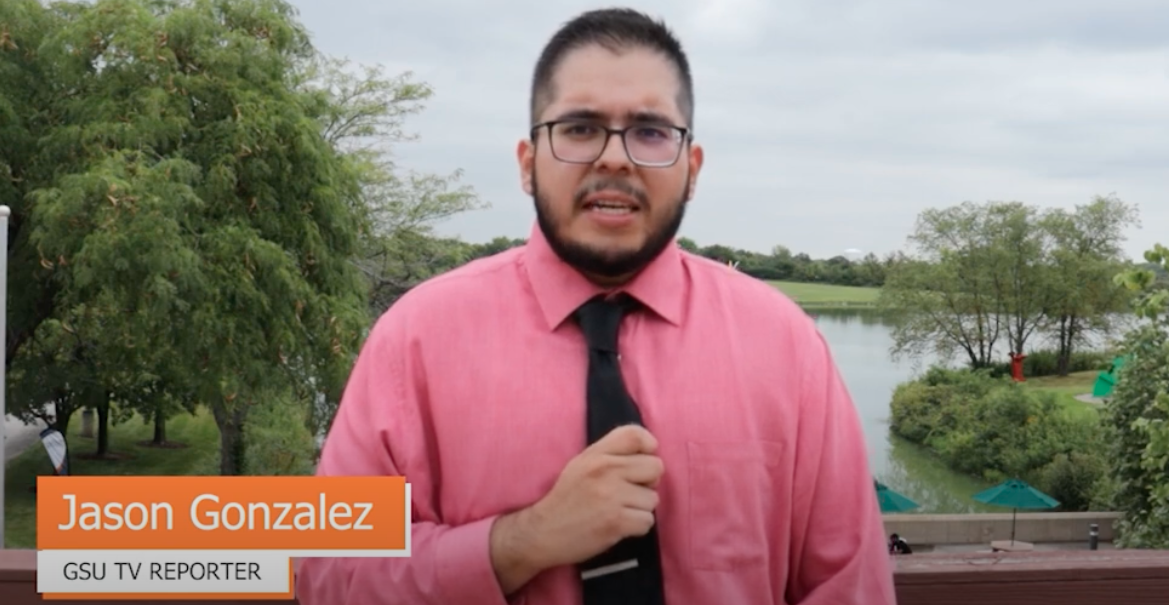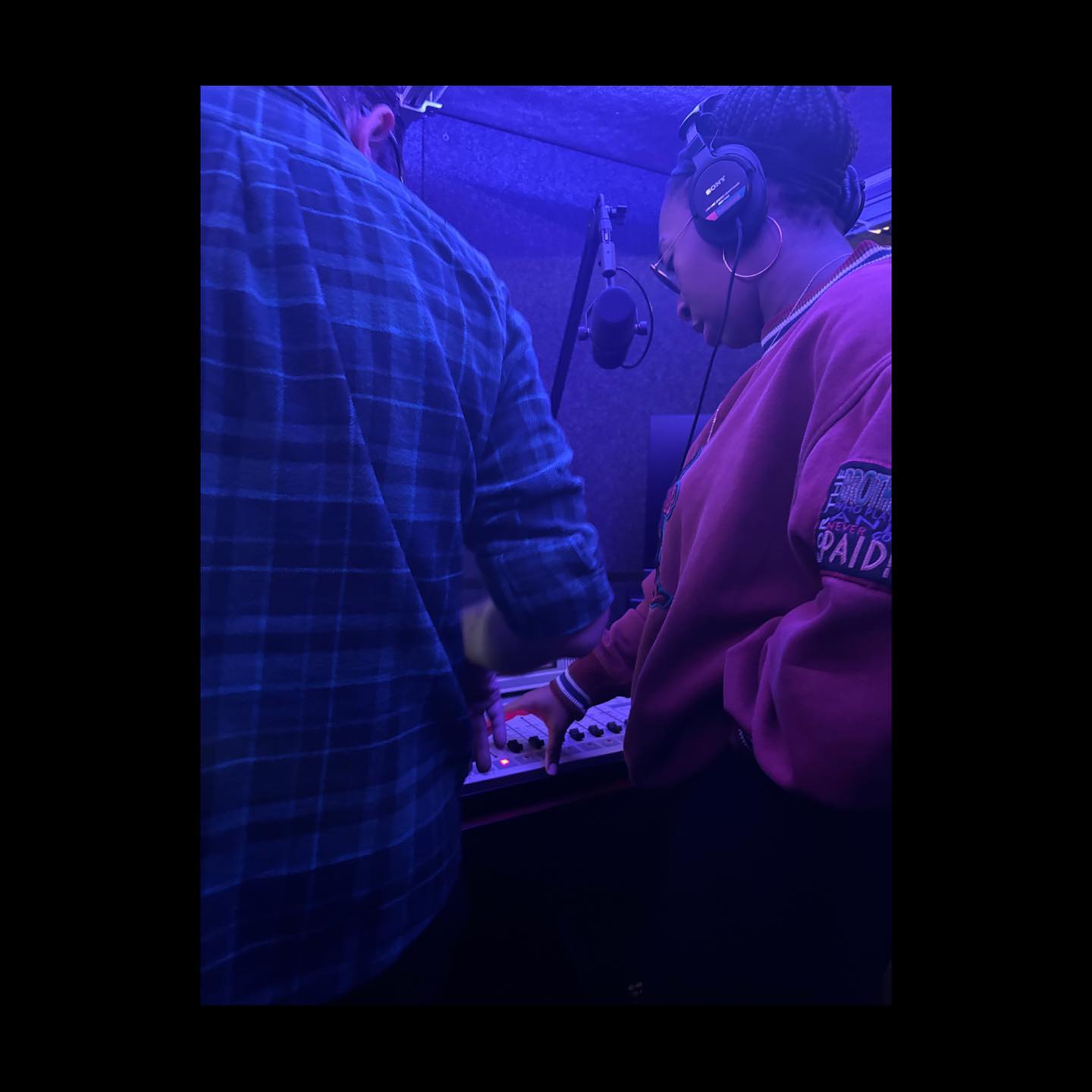
Jason Gonzalez, a student at Governors State University, reports for GSU TV, part of the university's Center for Community Media.
By Dominic Minadeo
Governors State University's Center for Community Media added another local news partnership to their list: the Invisible Institute.
The Invisible Institute, a watchdog journalism nonprofit founded in Chicago, focuses on holding public officials accountable, according to their website. The new relationship is funded by a grant from the Center for Community News at the University of Vermont.
Center for Community Media at the University Park, Illinois-based university produces student-driven articles in Chicago’s southland. They run the campus digital newspaper, The Phoenix, and also produce radio and broadcast stations at the school. The center partners with four local outlets that operate under one nonprofit, started in 2023, known as the Local News Alliance.
Students cover campus stories for The Phoenix and write articles about the community for the newspapers in the alliance, said Novia Pagone, the program coordinator.
“If it's, you know, covering local student organization events, those will just be in our paper,” Pagone said. “But if it's something bigger, then they often get in other small town papers nearby.”
Pagone was recently named a faculty champion for the Center for Community News, based at the University of Vermont, and was awarded a grant to fund community journalism around Governors State. The funds, she explained, went toward an investigative reporting project between the Invisible Institute and a current graduate student at the university which will yield more collaborations going forward.
“In Chicago, we have Northwestern and the Medill school and we have a lot of bigger universities, and so they often sort of gobble up a lot of the internships,” she said. “This is a way for us to make sure our students have this pathway.”
The partnership
Chris Weber, a 42-year-old graduate student at Governors State University and reporter for the Center for Community Media, joined the center in 2021 as an undergraduate student. He writes three to four articles a month for the Homewood–Flossmoor Chronicle, one of the newspapers of the local news alliance.
Through the Invisible Institute and the recent grant funding, he’s spent months reporting on police use of force in Joliet, a city 30 miles west of the university. Their reporting focuses on law enforcement abuses of power, according to Weber.
“What they do is they gather data about, like, police brutality, police interactions with civilians, stuff like that,” he said of the Institute, adding later, “We wanted to see what the process was when there's an officer-involved shooting. If there's ever any discipline for the officers, what that accountability process looks like there.”
Weber is reporting for the Invisible Institute and his work will be published in the Joliet Herald-News, which covers Will County, Illinois, the state’s fourth most populous county.
He expects his article to be published in April, and said what he and the Invisible Institute found in their reporting is “there’s definitely room for improvement.”
Community media
 The Center for Community Media has around 20 students working for it, Pagone said; 4,338 students attend the university as of Fall 2023, according to the university.
The Center for Community Media has around 20 students working for it, Pagone said; 4,338 students attend the university as of Fall 2023, according to the university.
The Center for Community Media first launched in 2021 after getting approval from the Illinois Board of Higher Education, Pagone said. That approval gives an official, temporary status to the center that lasts five years. “So that’s what we’re doing now,” she said.
The average age of students at the school seems to fall around 27, Pagone said, older than the average student population age. Having slightly older students involved brings in a variety of life experience that informs what student journalists want to cover and how they go about reporting, she noted.
Students are paid either through federal work study or from the center itself, which devotes a “big chunk of our budget” toward paying students for their work, Pagone said.
Bilingual journalism
Pagone holds a doctorate in Hispanic studies and mostly teaches in the Spanish program at the university, as well as the Latin American, Caribbean and the Latina studies program, according to Governors State University. She is rotating out as director of the Center for Community Media to “refocus on Spanish” and bring in a program leader that is more of a practitioner of journalism.
“So that's what we're looking for, is someone who has industry experience and can come in and work with our students,” she said.
But that doesn’t mean her work for the program will halt. She hopes to act as a sort of pipeline for student journalism by recruiting students in her classes to the program. She will also rejoin the Center for Community Media Steering Committee, which she served on before her tenure as director.
“I will go back to being a member on the steering committee, and will be able to, you know, sort of serve as a conduit in that way,” she said.
At the intersection of Spanish and journalism, Pagone has a vision to fill widening coverage gaps in still-underserved communities, like those in the area whose first language may not be English.
“We've done a little bit of that in our newspaper a few years ago where we had some bilingual stories, and I'm really hoping to continue doing that,” she said. “We have had a real uptick in Spanish speaking residents around the university with all the immigration and sort of the folks who've been bussed up here from the border — and a big chunk of those people have ended up here or near the university.”
In-text image caption: Students at Governors State University adjust audio levels for Radio Jaguar at the Center for Community Media.
